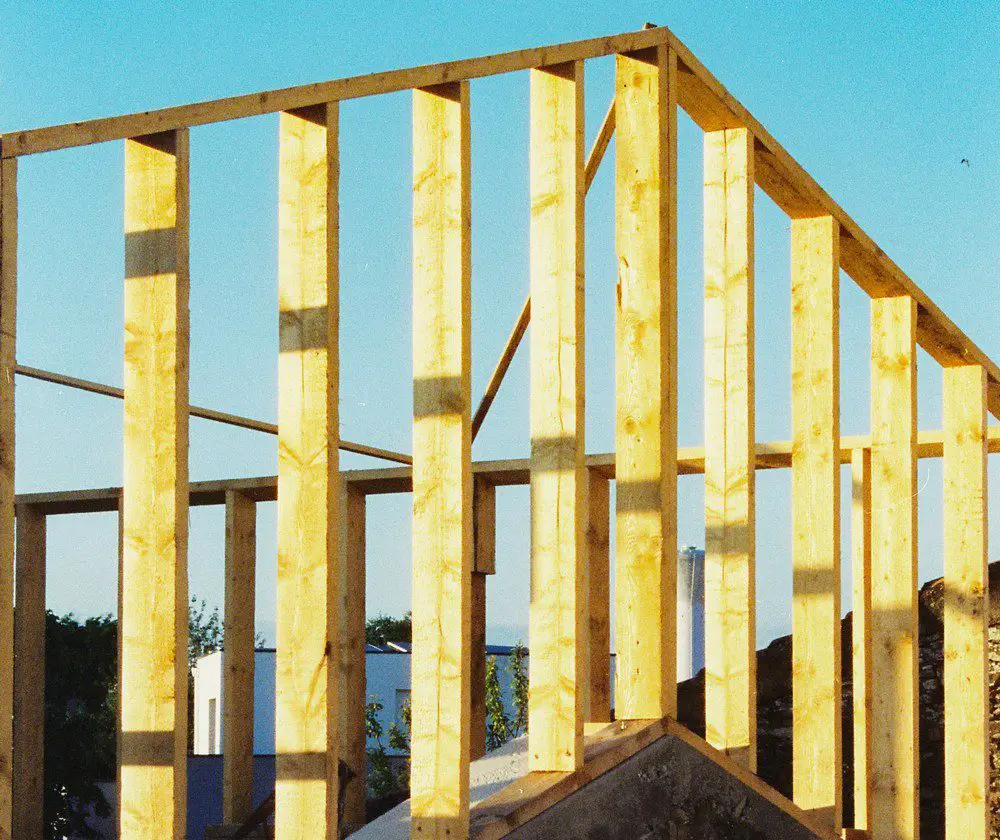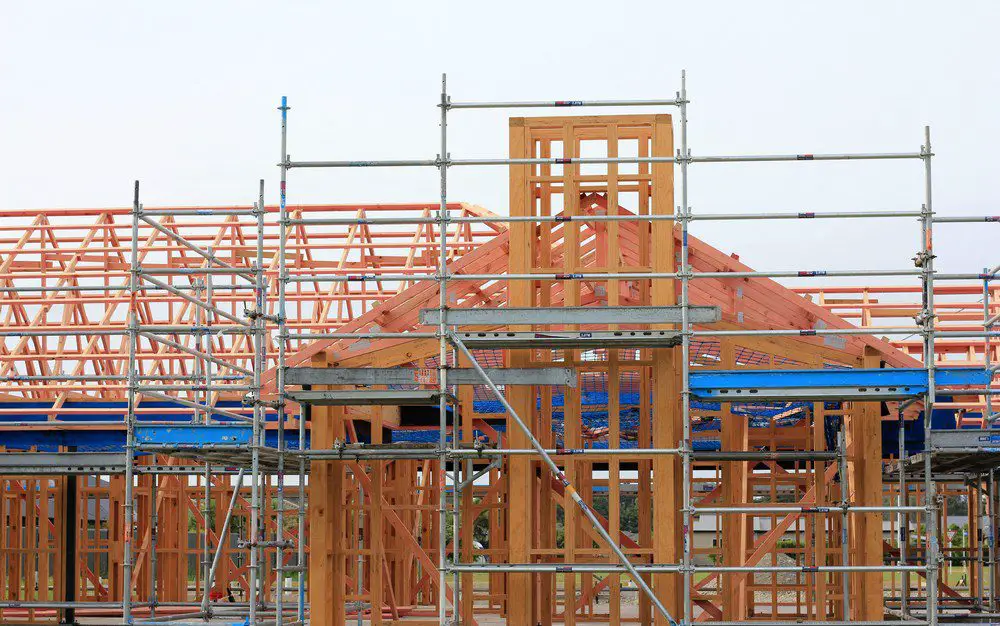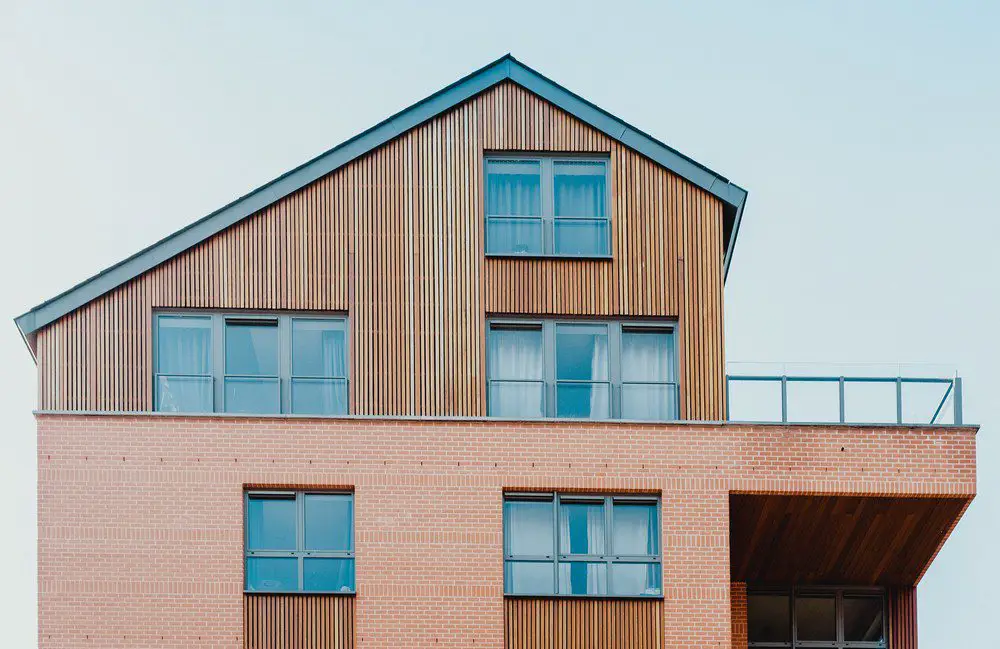Expanding your living space by adding a second floor is a big decision. It requires careful planning and understanding of the construction process. This move can offer more room without sacrificing yard space.
In this article, we explore the essentials of adding a second floor, from the initial design to the final touches.
Contents
- 1 Understanding the Basics of Adding a Second Floor
- 2 Design Considerations
- 3 Construction Process
- 4 FAQ About Adding a Second Floor
- 4.1 How much does adding a second-floor cost?
- 4.2 Do I need to move out during construction?
- 4.3 How long does it take to add a second floor?
- 4.4 Will my property taxes go up if I add a second floor?
- 4.5 Do I need to hire an architect for adding a second floor?
- 4.6 Can my current foundation support a second floor?
- 4.7 How do I choose the right contractor?
- 4.8 What should be included in the contract with the contractor?
- 4.9 How can I ensure the second floor addition matches my home’s style?
- 5 Conclusion
Understanding the Basics of Adding a Second Floor
When you’re considering adding a second floor to your house, it’s crucial to start with a solid foundation of knowledge. This phase lays the groundwork for your project and ensures you’re well-prepared for the steps ahead. It’s about aligning your vision with the practicalities of construction, legalities, and logistics.
Legal and Zoning Requirements
Before you adding a second floor, you need to check the local laws. Each city has its own set of zoning regulations. These rules define what you can and can’t do with your property.
You must find out if adding a second floor in your area is allowed. Often, there will be height limits, distance from the street, and how much space your building can take up on the property.
You also need permits for adding a second floor. Without these, you can’t legally start your construction. The permit process makes sure your plans are safe and follow the code. It can involve several steps, including submitting your design plans for approval.
It’s best to get a professional to help with this process. They know the requirements and can often get approvals quicker.
Choosing the Right Contractor
Adding a second floor requires finding a contractor you can trust. This professional will be the backbone of your project, so making an informed choice is vital. Here are the factors to consider when selecting a contractor for your home expansion.
Experience and Expertise
You want a contractor with a strong background when adding a second floor. They should have a portfolio showcasing their completed second-floor projects. This experience is crucial, as second-story construction presents unique challenges.
Reputation and References
When adding a second floor, research potential contractors’ reputations. Look for reviews and testimonials from past clients. Contact references and ask about their experiences. Were projects completed on time and within budget? How was the communication? Would they hire the contractor again?
Licensing and Insurance
Ensure that your contractor has the necessary licenses before adding a second floor to your home. They should also have liability insurance and worker’s compensation. This protects you from any liability in case of accidents during construction.
Detailed Bids and Contracts
Request detailed bids from each contractor adding a second floor to your home. These should break down the costs, timeline, and work to be completed. A transparent bid reflects a contractor’s honesty and willingness to adhere to agreements. Contracts should be comprehensive and clear, outlining all aspects of the project.
Communication and Professionalism
Your contractor should be easy to communicate with. They should be open to your ideas and provide feedback based on their professional experience. Professionalism is also evident in their punctuality, the way they handle disputes, and their overall demeanor.
Subcontractors and Team
Often, contractors work with a team or hire subcontractors for specialized tasks. Inquire about the qualifications of these individuals. Are they trustworthy and experienced in their fields?
Warranty and Service
A reliable contractor will offer a warranty after adding a second floor. They should be willing to address any issues even after the project is completed. Post-construction service signifies a contractor’s commitment to quality and customer satisfaction.
Considering these factors, you can choose the right contractor for adding a second floor. The right professional will ensure your project’s success and give you peace of mind.

Structural Assessment Before Adding a Second Floor
A structural assessment is important before adding a second floor. This evaluation must be thorough, as it lays the foundation for a safe and successful expansion. Here’s what to look for during this crucial stage.
Understanding Your Home’s Foundation
The assessment begins with an inspection of your home’s foundation. An engineer will check its depth, strength, and the materials used. They determine whether adding a second floor is possible or not. If your foundation requires reinforcement, they will provide specific recommendations.
Analyzing the Current Frame
The bones of your house, its frame, must withstand the weight of another level. The assessment includes checking the size and spacing of existing beams and joists. The engineer will suggest enhancements if the frame is not up to standard before they consider adding a second floor.
Checking for Potential Damage
An assessment also looks for signs of pre-existing damage. This might include termite damage, wood rot, or previous water damage. Addressing these issues is essential before adding a second floor to your home.
Evaluating the Soil
The soil condition on your property can affect your home’s ability to support when adding a second floor. Engineers test the soil for stability. Poor soil conditions may require special construction techniques to ensure a stable addition.
Reviewing Local Building Codes
Your structural assessment will take into account local building codes. These codes might influence the type of materials you can use and how the structure must be reinforced. Compliance is non-negotiable for the safety and legality of your project.
Detailed Reporting
After completing the assessment, the engineer will provide a detailed report. This document will be essential for your contractor to plan the construction. It will also be necessary to obtain the required permits before adding a second floor.

Budget Planning
When adding a second floor, a well-planned budget is vital. It ensures your project stays on track financially and helps avoid unexpected costs. Here’s how to create a realistic budget for your home expansion.
Calculating Costs
Start by understanding the various costs involved in adding a second floor. These include design and architectural services, permits, construction materials, labor, and new fixtures or features. Don’t forget to factor in the cost of any temporary accommodations if you need to move out during construction.
Contingency Fund
Always have a contingency fund when adding a second floor. This is extra money set aside for unexpected expenses. Unforeseen issues often arise during construction. A good rule of thumb is to add 10-20% of your total estimated costs to your budget as a contingency.
Quality versus Cost
Decide where you want to invest in quality and where you can save. Some elements, like structural materials, are not worth compromising on. However, you might choose less expensive fixtures or finishes that can be easily upgraded after adding a second floor.
Long-Term Savings
Consider the long-term financial impact. Adding a second floor can increase your property’s value. It can also affect your property taxes and utility costs. Energy-efficient materials and appliances might cost more upfront but can save you money in the long run.

Project Timeline
Creating a timeline for your second-floor addition is crucial. It helps keep your project on schedule and lets you plan your life around the construction. Here’s what to consider when developing a project timeline.
Initial Planning Phase
The planning phase includes designing, obtaining permits, and hiring a contractor. This can take several weeks to a few months, depending on the complexity of your project and the speed of local permitting offices.
Construction Milestones
Break down the construction process into phases. Start with demolition and site preparation, followed by framing, roofing, and exterior work. Then, move to interior elements like plumbing, electrical, and finishes. Assign a timeframe to each phase.
Weather and Delays
Consider the season and weather conditions. Bad weather can delay outdoor work like framing and roofing. Plan for these potential delays in your timeline.
Inspections and Approvals
Include time for inspections and approvals throughout the construction. These are often required at multiple stages and can vary in scheduling depending on the availability of inspectors.
Clear Line of Communication
Trusted contractors are expected to provide regular updates on the construction of your home extension. When looking for a companying to adding a second floor, ask how they will keep an open line of communication with you. Doing so lets you adjust the timeline of the project when needed.

Design Considerations
Designing a second-floor addition involves more than just adding space. It’s about ensuring the new level blends seamlessly with your existing home and meets your needs. Thoughtful design choices will influence the functionality, aesthetic appeal, and comfort of your expanded home. Here are the key areas to focus on during the design phase.
Harmonizing with Existing Architecture
When adding a second floor, it’s essential to integrate the new addition into your home’s existing architectural style. A cohesive design maintains the character and curb appeal of your property.
Pay close attention to the details of your home’s exterior. This includes the roofline, siding, windows, and doors. The second story should match these elements in style and color. It should look like it was always part of your home, not an afterthought.
The interior should also have a seamless transition. This can be achieved through consistent flooring, wall finishes, and architectural details. The goal is for someone walking through your home to feel a sense of unity from the first floor to the second.
Any addition should respect the original building’s structural integrity. This involves maintaining load paths and not overburdening the existing foundation and walls. A harmonious design ensures the new level supports and complements the structure below.
Consider the surrounding neighborhood. Adding a second floor shouldn’t overshadow neighboring homes or clash with the local aesthetic. A design that considers the community’s character will be more appealing and can even add to the investment value of your home.
Interior Layout and Functionality
Creating a functional interior layout is critical when adding a second floor. It’s about more than just adding rooms; it’s about shaping spaces that enhance your lifestyle.
Plan the location of each room carefully. Bedrooms often go on the second floor for privacy and quiet. Living areas might be more practical on the lower level. Consider the flow between rooms and how the layout will affect daily life.
Consider adding elements that would make your second-floor rooms look larger. These elements include a large mirror or allowing in more natural lighting.
Think about stair placement for easy access. The stairs should not disrupt the flow of the existing floor. They should feel like a natural extension of the home. Hallways and doorways must be wide enough to move comfortably through.
Design with storage in mind. Built-in storage solutions save space and maintain a clean look. Closets, shelving, and attic spaces are important to consider. Every square foot counts, so plan wisely to maximize your new space.
Your needs may change over time. Rooms that can adapt to different uses over the years will add value. Consider flexible spaces that could be a bedroom today and an office tomorrow.
With thoughtful design, your second floor’s interior will be beautiful and functional. It will support your everyday activities and evolve with your family’s needs.

Natural Light and Ventilation
Maximizing natural light and ventilation is key in the design of your second-floor addition. These elements are not only energy-efficient but also contribute to a healthy and inviting living space.
Consider where the sun rises and sets when placing windows. This can ensure rooms are bright during the day and not overheated. Larger windows or skylights can flood the space with light and offer sky views.
Position windows and doors to enhance cross ventilation. This can help regulate the temperature and improve air quality. The goal is to create a comfortable environment without relying heavily on artificial cooling and heating.
If possible, design outdoor spaces like balconies or terraces. These can provide additional light and airiness. They also connect to the outdoors, which can be especially valuable in bedrooms or communal spaces.
You can further enhance the ventilation of your second-floor rooms with exhaust fans. Consider the Ventilation Fan, which is easy to install in any room. The fan also comes with a light fixture and has a powerful fan unit for efficient ventilation.
Include shading strategies in your design. Overhangs, awnings, and shutters can control the amount of sunlight entering the space. This helps in reducing glare and keeping the space cool.
With these considerations in mind, your second floor will be a bright, airy space. It will also be energy efficient and comfortable year-round.
Material Selection and Sustainability
Choosing the right materials is a crucial step in adding a second floor. Sustainable options can reduce environmental impact and improve energy efficiency.
Select materials that are sustainably sourced or made from recycled content. These choices can reduce the carbon footprint of your addition. Look for certified wood, recycled metal, or composite materials.
Good insulation is vital for energy conservation. It keeps your home warm in winter and cool in summer. Use high-quality insulation to reduce the need for heating and air conditioning.
Consider environmentally friendly roofing materials. Green roofs, cool roofs, or solar tiles can provide insulation and reduce energy costs. They can also be visually appealing and blend well with your existing roof.
Choose finishes that have low volatile organic compounds (VOCs). These are healthier for both the environment and your family. Low-VOC paints, sealants, and adhesives can improve indoor air quality.
Construction Process
The construction process for adding a second floor is complex and requires meticulous attention to detail. It’s a multi-stage endeavor that transforms designs and plans into a tangible living space. Here’s a breakdown of the phases you’ll encounter during the build.
Site Preparation and Safety
Before construction begins, the site must be prepared. This stage lays the groundwork for a safe and efficient build.
Clearing and Preparing the Site
First, the area around your home will be cleared. Any structures, like sheds or old patios, may need to be removed. The ground will be leveled and stabilized to support equipment and materials.
Establishing Safety Measures
Safety is the top priority. Fencing will go up around the construction zone to keep out unauthorized personnel. All workers will be briefed on safety protocols, including using hard hats, safety glasses, and proper footwear.
Setting Up for Construction
Temporary structures like scaffolding and waste disposal units will be set up. Power lines may be installed to provide electricity for tools and equipment. The site will be organized to ensure materials are accessible and the area remains uncluttered.
These initial steps are essential adding a second floor. With careful preparation and a commitment to safety, the foundation is set for the rest of the construction process.

Demolition and Framing
The first physical changes happen during the demolition and framing stages. This is when your second floor starts to take shape.
Demolition
If the second-floor addition requires removing part of the roof or existing upper structures, demolition is done carefully to avoid damaging the rest of the house. Debris is removed systematically to keep the site clean and safe.
Framing the Addition
After demolition, framing begins. This is the skeleton of your new second floor. It outlines rooms, windows, and doors. Quality materials and precise craftsmanship during framing are critical for a sturdy and well-aligned structure.
Ensuring Structural Integrity
As the framing goes up, the construction team will continually check to ensure the new floor is perfectly integrated with the existing structure. They will reinforce the foundation if necessary, ensuring it can support the additional weight.
The completion of framing gives the first real glimpse of the new space. It sets the stage for the next steps in creating your second-floor addition.
Weatherproofing and Exterior Work
Once the framing is up, the next phase is to protect the new structure from the elements and begin shaping its exterior appearance.
Roof Installation and Weatherproofing
The new roof is one of the first defenses against weather. It will be constructed to match your existing roofing, ensuring a seamless transition. Waterproof barriers and proper insulation will be installed to prevent leaks and drafts.
Siding and Exterior Finishes
The exterior walls will be fitted with siding that complements the rest of your home. Options may include wood, vinyl, or brick, depending on the existing materials. Proper installation is key to prevent moisture penetration and ensure durability.
Window and Door Installation
High-quality windows and doors are fitted to enhance energy efficiency and security. They also contribute to the aesthetic appeal and can be custom-designed to align with the home’s character.
Final Sealing and Insulation
The last step in weatherproofing is sealing all joints and edges. This includes caulking around windows and doors. Additional insulation may be added around openings to minimize heat loss.
These measures protect your new second floor from weather-related damage. They also contribute to a comfortable indoor climate year-round. With the exterior secure, the project moves inside for the next construction stages.
Interior Systems Installation
Once the second floor is fully weatherproofed, the focus shifts to the interior systems that make the space livable and functional.
Electrical and Plumbing
Electricians and plumbers will install the necessary wiring and pipes. These are routed through walls and ceilings to provide power, lighting, and water services to your new floor. This step must comply with local building codes and standards for safety and functionality.
HVAC Integration
The heating, ventilation, and air conditioning (HVAC) system will be extended to the new floor. It’s essential to ensure that the existing system can handle the additional load or if a new system is required.
Inspections
After these systems are installed, inspections are often required. This ensures everything is installed correctly and safely before walls are closed up. These checks are crucial for preventing issues later on.
These systems are the veins and arteries of your home. They must be installed with precision to ensure comfort and safety in your new space. Once they pass inspection, the project moves forward with insulation and drywall, bringing you one step closer to enjoying your new second story.
Insulation and Drywall
The next steps involve insulating your new space and enclosing it with drywall, which is crucial for comfort and energy efficiency.
Installing Insulation
Insulation is fitted between the framing studs. It keeps your second floor warm in the winter and cool in the summer. The type of insulation used can vary, but it must meet energy codes and contribute to a consistent indoor temperature.
Hanging Drywall
After insulation, drywall panels are cut to size and secured to the framing. This creates the walls and ceilings. Joints between the panels are taped and finished with drywall compound, which is then sanded smooth once it dries.
Priming Walls
The new drywall will be primed to prepare it for painting. Primer seals the drywall and ensures a smooth, even finish for your chosen paint colors or textures.
This phase transforms the addition from an open frame to defined rooms. With insulated and enclosed walls, your second floor feels like part of your home.
Finishing Touches and Cleanup
With the structure enclosed, the final touches can begin. These details will bring the space to life.
Interior Finishes
The walls are painted, and the flooring is laid down. Choices here reflect the homeowner’s style and the house’s overall design. Trim work, such as baseboards and moldings, are installed to give the rooms a finished look.
Fixture Installation
Light fixtures, outlets, and switches are installed. Plumbing fixtures like sinks, toilets, and showers are put in place. These elements are critical to the functionality of your second floor.
Final Walkthrough
A final walkthrough ensures every detail meets the homeowner’s expectations and all work is up to standard. It’s the time to catch any small issues that need addressing before the space is considered complete.
Site Cleanup
Construction debris is removed, and the site is thoroughly cleaned. The new addition and surrounding area must be left spotless, making the space ready for furniture and decor.
The completion of these final steps signifies that the project is nearly complete. The new second floor is now ready to be a fully integrated part of the home.
FAQ About Adding a Second Floor
How much does adding a second-floor cost?
Do I need to move out during construction?
How long does it take to add a second floor?
Will my property taxes go up if I add a second floor?
Do I need to hire an architect for adding a second floor?
Can my current foundation support a second floor?
How do I choose the right contractor?
What should be included in the contract with the contractor?
How can I ensure the second floor addition matches my home’s style?
Conclusion
Adding a second floor is more than just an expansion—it’s a transformation of your living space that adds value and functionality to your home. It requires careful planning, a reliable team, and attention to detail. From understanding zoning laws to selecting sustainable materials, each step is important.
By staying informed and involved throughout the process, homeowners can ensure a successful addition to their homes, one that meets their current needs and anticipates future ones.




